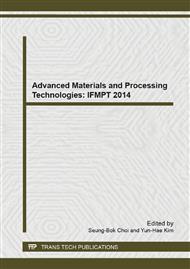p.3
p.7
p.11
p.15
p.20
p.27
p.35
p.39
Compressive Behavior of a Polyurea Elastomer
Abstract:
The application of elastomeric coatings for improving the ability of already existing structures to dissipate the energy released by impact events has been investigated by many researchers in the past decade and is today an area of considerable interest. In recent years, polyurea has been successfully applied as a coating material for enhancing the impact protection of buildings and it has also demonstrated a considerable improvement of the survivability of metallic and non-metallic structures subjected to severe shock and impact loading conditions. Given its remarkable properties in terms of impact energy mitigation, life endurance and corrosion resistance, this material is currently of interest for its application in many fields of engineering. This paper presents and discusses the results of the mechanical characterization conducted on a polyurea elastomer fabricated following two different procedures and subjected to varying strain rates of compression load. The tests were conducted to verify the sensitivity of the material behavior to the varying loading conditions and to verify how the fabrication of the material in the laboratory can influence the test results.
Info:
Periodical:
Pages:
7-10
Citation:
Online since:
February 2014
Authors:
Price:
Сopyright:
© 2014 Trans Tech Publications Ltd. All Rights Reserved
Share:
Citation:


